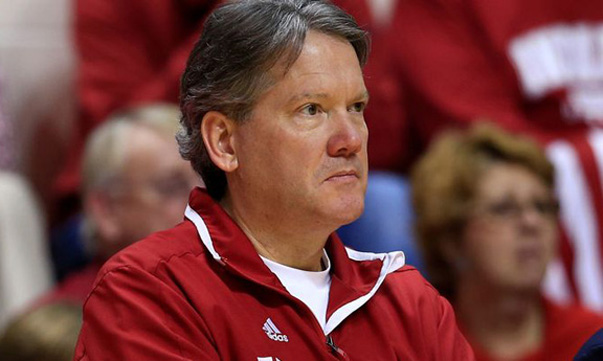Big Ten informs NCAA of recommended reforms; IU announces quantification of scholarships

The Big Ten Conference announced on Wednesday afternoon it has informed the NCAA of several reformations to student-athlete benefits it wishes to enact, similar to those in the IU Student-Athlete Bill of Rights released in July.
The conference has proposed giving its student-athletes full cost-of-education financial aid, guaranteed four-year scholarships, lifetime scholarships that will allow former student-athletes to complete their degree should they leave school early to pursue professional careers and “improved, consistent” medical insurance.
According to a release from the conference, it hopes to achieve these proposals through individual institutional action, conference-wide action or under the new NCAA semi-autonomy structure, which grants the major five conferences — the Big Ten, ACC, SEC, Pac-12 and Big 12 — more authority to create their own governing rules.
The proposals were first raised by Big Ten commissioner Jim Delany at the Big Ten Football Media Day in July 2013 and were designed to enhance the quality of student-athlete life while maintaining amateur status and educationally-sponsored intercollegiate athletics in a time period in which support for pay-for-play and student-athlete unionization models have been growing.
“I know athletes at a younger and younger age are asked to select a sport or either select a sport and that they train for it very rigorously,” he said at the time. “And this is not just an American phenomena. I think it’s an international phenomenon. So I want to make sure that our rules, regulations, constraints, and standards are properly balanced so that once a student is admitted, he or she has the opportunity to do what they need to do academically to continue to move forward.”
This past July, IU led the NCAA in enacting student-athlete benefits reform by producing its Student-Athlete Bill of Rights, a document which ensures student-athletes at IU will have access to a lifetime degree assurance (in which former student-athletes can return to finish their degree with the University paying for their tuition, books and fees), a guaranteed four-year scholarship and full cost-of-education aid, among other reforms.
The move, according to IU vice president and director of intercollegiate athletics Fred Glass, was to give student-athletes greater rights while giving the University more accountability. IU was the first school to produce such a document.
“We developed the Bill of Rights to identify not only what we were currently doing for our student-athletes but what we should be doing,” Glass said at the time of the release. “We have committed to this extensive set of benefits and set it out transparently in writing, so that we can be held accountable for them by our student-athletes and other stakeholders such as our faculty and trustees. While no other school has done this, we hope that others will follow for the betterment of the student-athlete experience.”
Following the Big Ten’s move to pursue similar reforms conference-wide, Indiana on Wednesday afternoon released for the first time its estimates on the cost of four-year scholarships for both in-state and out-of-state students in order to help the “understanding of the true value of an athletics scholarship and the college degree it makes possible.”
For in-state student-athletes, IU estimated a $135,766 value, while for out-of-state student-athletes the University estimated $240,274 goes into a four-year scholarship. And outside of tuition and fees, those scholarships include room and board, books, academic services, food and nutrition, general medical wellness, summer school and fifth-year aid and computer labs and other technologies, among costs.
“I think what gets lost is the conversation today is what really is the value of a scholarship,” Glass told Inside the Hall on Wednesday evening. “Not just the room, board and tuition but all the other things that we do that are reflected in that quantification, that document. So people can make their own judgments but I thought it was important, primarily to inform.”
Glass, an advocate of the collegiate model, said a pay-for-play system could result in the loss of scholarships and entire teams and has in turn provided more student-athlete benefits within the current NCAA framework. He also welcomed the Big Ten’s announcement on Wednesday that such reforms should spread league-wide.
“We understand what the reform agenda is for those who are trying to fix or improve the collegiate model, and we’re hand-in-glove with what the Big Ten is doing,” Glass said. “Jim Delany and the Big Ten have been at the forefront of all of this. They’ve been talking about it before anyone was talking about it. So, clearly, we endorse that and we’re certainly inspired by that with our Bill of Rights.”
Category: Media
Filed to: Big Ten Conference, Fred Glass
